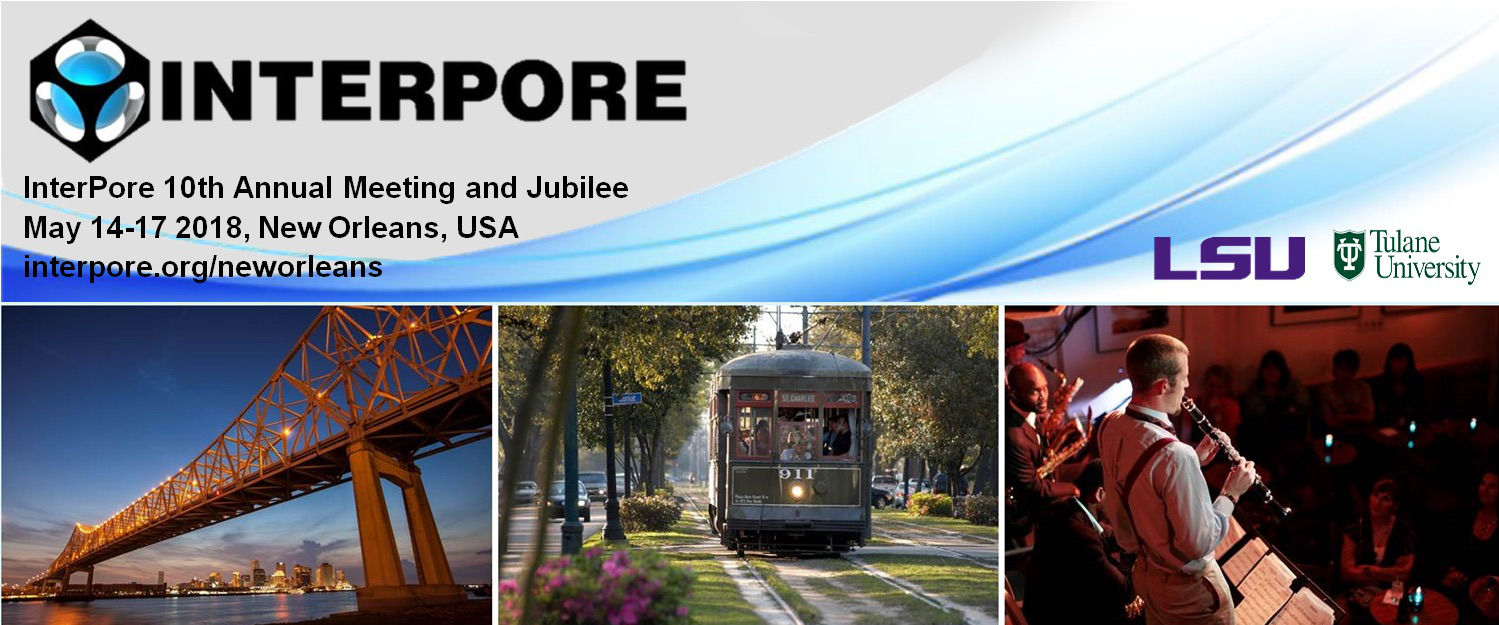Speaker
Description
Micromodels have been artificially manufactured with microfluidic networks of pores and throats, thus emulating the pore-scale geometries in porous media, for example, oil reservoir rocks. Micromodels manufactured in Si or glass have been used to visualize fluid flows in waterflooding experiments and two phase flow experiments, but their geometries have been limited to 2D pore network geometry. Realistic rock-based, 2.5D polymer micromodels made from the image of the Boise sandstone rock were developed for the measurements of 3D distributions of velocities and concentration of nanoparticles. Such 2.5D polymer micromodels enabled low cost manufacturing with replication-based process. However, studies of nano-particle mobility for in-reservoir applications require more realistic micromodels in terms of not only their 3D pore network geometries but also their materials, which are essentially similar to ceramics.
In this work, we present fabrication and flow visualization for rock-based, 2.5D ceramic micromodels. The 2.5 D micromodels are 3D pore and throat networks with one wall flat (for observations) and the others fully 3D. The green ceramic precursors were batched using alumina powders and polymer binder mixture using a torque rheometer. The batch was used to extrude 3 mm thick green ceramic tapes in a custom-made, rectangular extruder, which yielded shiny and flat tapes. Micromolding of the green ceramic tapes was performed in a conventional hydraulic press using a nickel mold in 13 layers fabricated using images of oil reservoir rock (Boise sandstone). The polymer binder mixture in the molded micromodels was removed by solvent extraction and thermal debinding. Sintering was carried out to densify the ceramic micromodel followed by sealing with a glass slide. Scanning electron microscopy inspection confirmed the distinct formation of 13 layers in the sintered ceramic micromodel, thus resembling the 3D pore network geometries of the 3D rock. The optical profilometer scan data showed the shrinkage of the ceramic micromodel after sintering (17.6% in x, 17.5% in y, and 16.4% in z).
Flow behaviors in 3D were investigated in the sealed ceramic micromodel using a confocal microscope with fluorescent dye and nanoparticles. The micromodel filled with dye showed good flow connectivity from bottom to top and fluorescence signal intensity dependence on depth. Fluorescent nanoparticles were injected at a flow rate of 30 nL/min and imaged in 5 µm depth increments. The overall flow patterns confirmed the similar principle flow paths as in the 2.5D polymer micromodel. A region of interest (ROI) with a least pressure resistant flow path was selected in the micromodel to investigate 3D variations of particle concentration and particle velocity. Peak particle concentration close to the observation window and gradual decrease in particle concentration along the depth were observed in the ROI. The ROI showed the higher velocities in the right throat (depth of 10 µm) due to lower flow resistance, and velocity variations along the depth. The rock-based, 2.5D ceramic micromodels will open a new avenue for the realization of rock-like micromodels from pulverized rocks with relevant pore geometry and material properties.
| Acceptance of Terms and Conditions | Click here to agree |
|---|


